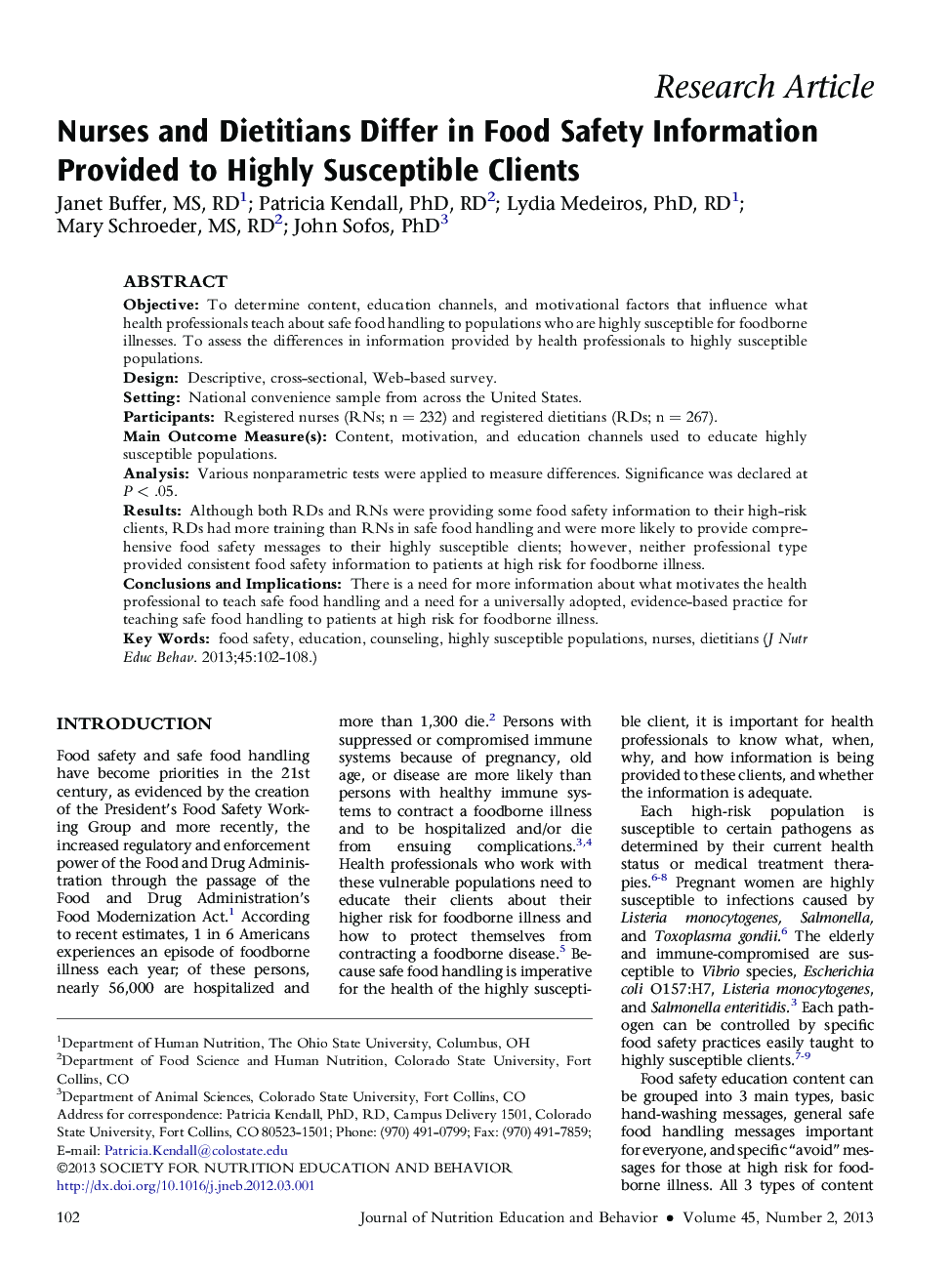| Article ID | Journal | Published Year | Pages | File Type |
|---|---|---|---|---|
| 361908 | Journal of Nutrition Education and Behavior | 2013 | 7 Pages |
ObjectiveTo determine content, education channels, and motivational factors that influence what health professionals teach about safe food handling to populations who are highly susceptible for foodborne illnesses. To assess the differences in information provided by health professionals to highly susceptible populations.DesignDescriptive, cross-sectional, Web-based survey.SettingNational convenience sample from across the United States.ParticipantsRegistered nurses (RNs; n = 232) and registered dietitians (RDs; n = 267).Main Outcome Measure(s)Content, motivation, and education channels used to educate highly susceptible populations.AnalysisVarious nonparametric tests were applied to measure differences. Significance was declared at P < .05.ResultsAlthough both RDs and RNs were providing some food safety information to their high-risk clients, RDs had more training than RNs in safe food handling and were more likely to provide comprehensive food safety messages to their highly susceptible clients; however, neither professional type provided consistent food safety information to patients at high risk for foodborne illness.Conclusions and ImplicationsThere is a need for more information about what motivates the health professional to teach safe food handling and a need for a universally adopted, evidence-based practice for teaching safe food handling to patients at high risk for foodborne illness.
